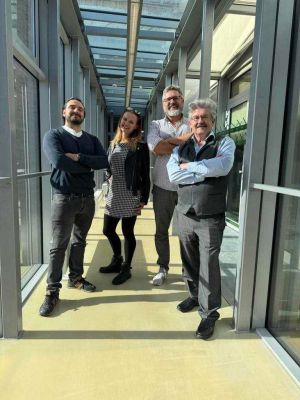Poznan researchers, by publishing an article in the prestigious Nature Communications, have proved that ancient marine sponges contain the same types of collagen (I and III) as mammals. This discovery not only underlines the shared molecular heritage with early animals but also offers new perspectives for regenerative medicine, materials engineering and biotechnology.
The research carried out in collaboration between Prof Hermann Ehrlich (AMU Centre for Advanced Technology) and scientists from the AMU NanoBioMedical Centre - Prof Jakub Rubka, Dr Filip Porzuck and Dr Monika Mańkowska-Wożniak - and researchers from the Poznan University of Life Sciences, Poznan University of Technology, MIT and the Max Planck Society, has shown that spongin - a protein forming the skeleton of sponges - contains the same collagen molecules found in human tissues. It is evidence for the unique structural stability of collagen and its fundamental role in the evolution of organisms.
The practical application of the discovery could include the development of new medical materials - from bandages to 3D-printed implants. Poznan scientists within Cofactor and SpinBionic are working on innovative collagen preparations that could revolutionise the nutraceuticals and regenerative medicine market.
The team's publication confirms the science contributing to the development of modern biotechnology and materials engineering.
